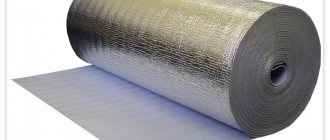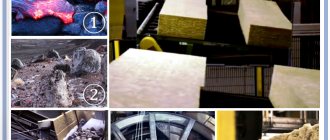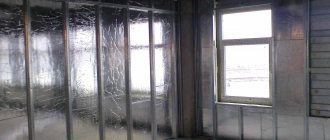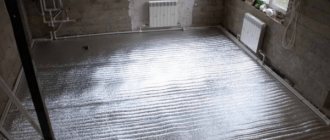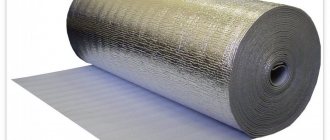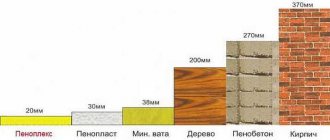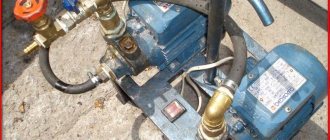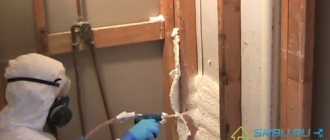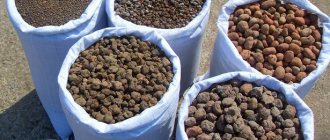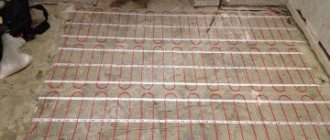In the insulation department of any construction supermarket there is a place allocated for penofol. Thin rolled material with a foil surface attracts attention, but its appearance does not always answer the question of where it can be used.
However, it successfully occupies a whole niche in the field of home insulation, where conventional insulation materials, such as mineral wool or expanded polystyrene, will not help adequately cope with the task.
What is Penofol
Penofol is a practical and inexpensive insulation made of non-crosslinked polyethylene foam with aluminum foil applied on one or both sides of the material. Gas-filled cells are sealed and closed, which provides high compressive strength, but does not interfere with the bending of the material. The cell size is usually from 0.5 to 2 mm.
Instead of aluminum foil, lavsan is also used, a polymer material with good reflectivity in the infrared frequency range of electromagnetic waves.
Its advantage is its dielectric properties - it does not allow electric current to pass through , which is especially important when installing electric heated floors.
The insulation stands out from the rest due to its affordable price and simple installation method, however, due to thickness limitations, it is used in a fairly narrow number of cases where it is only necessary to supplement the existing enclosing structures, increasing the overall resistance to heat loss.
Penofol has found its main area of application in air conditioning and thermal insulation systems, where the bulk of the heat is transferred using infrared radiation.
Three types of penofol are produced:
- Type A - with one-sided foiling;
- Type B – with double-sided foil;
- Type C – foil on one side and self-adhesive surface on the other side.
The choice of a suitable option is determined by the direction of propagation of the target thermal radiation. For example, one-sided penofol, when installed on the wall of a living space, when the foil surface is facing inward, protects against heat loss from inside the house to the outside. This means the house will be warmer in winter.
Double-sided penofol can not only prevent heat loss from the house to the street, but also the flow of heat from outside. So it will be warm in winter and not hot in summer, since the heat from the walls irradiated by sunlight will not overheat the air inside the room.
Scope of application
The material reflects 97% of heat when installed behind a radiator
Penofol can be used as primary or additional reflective thermal insulation. As the main material, it is used to insulate walls from the inside, and in wooden houses for heated floors.
The material is used as additional thermal insulation in the design of residential and industrial premises.
The use of Penofol allows you to simultaneously solve several issues:
- reflection of dissipated heat;
- waterproofing;
- vapor barrier.
The material can be used not only for interior work - the insulation is also effective for insulating the walls of a house outside.
The scope of application of penofol extends not only to internal insulation, but also external. This type of insulation is also used for thermal insulation of residential premises, civil and industrial production:
- country house or apartment in a multi-storey building;
- roof;
- ceiling coverings;
- attics and attics;
- basement and basement structures.
- underfloor heating system (water, electric) and roof insulation;
- building facades;
- water and air pipes;
- insulation of refrigeration structures;
- ventilation and air duct system.
Sometimes the wall where the battery is located is covered with foil material. This is done so that the heat is not absorbed by the wall, but goes inside the room.
For domestic needs, three types of penofol are used: A, B, C. The scope of application of this material as a heat-insulating building material is very extensive: walls, ceilings, floors, insulation of concrete surfaces, loggias, insulation of wooden and frame buildings.
You can easily do the installation of penofol with your own hands without the involvement of specialists, the main thing is that the safety instructions are followed.
On the floor
Before you begin fixing the insulation, you need to prepare the base of the floor with a concrete screed. For this purpose, a liquid cement solution is used, which is poured onto the surface and leveled.
The following actions are related to the selected type of penofol:
- If type A penofol is used, then a fixing adhesive is applied to the foam in an even layer, after which the penofol is fixed.
- If type C foil material is used, then no adhesive is applied. This type of material is already equipped with an adhesive solution on the back of the building material. To prevent the waterproof adhesive solution from drying out prematurely, it must be covered with polyethylene. Before starting work, the plastic film is carefully removed, and then the foil material is laid out on the foam.
We invite you to familiarize yourself with Finishing the stove in a bathhouse with decorative stone
The building material is laid in such a way that the foil overlaps the walls (about 5 cm), and the resulting joints are sealed with aluminum insulating tape.
When installing a heated floor system, there are 2 main types of installation: the use of logs or concrete screed. Logs are used if a wooden floor will be installed on top of the insulation. In this case, wooden logs are installed along the floor on top of the heating elements.
The horizontal position of the beams must be controlled using a building level. Then a wooden covering is mounted on top of the logs. Thus, the foil material will heat up and transfer heat from below to the wooden coverings.
The second variation is to install a warm floor system under the tiles. In this case, the special heating elements are covered with reinforced mesh and filled with concrete mixture. For this type of installation it is necessary to use penofol type ALP.
For walls
To insulate internal walls, type B foil material is used. Its installation is more complex than other types of penofol, but this insulating material can create the most effective thermal insulation of a room.
Material with double-sided metal special coating is mounted as follows:
- Using dowels, you need to secure the bars to the concrete wall (thickness 1-2 cm).
- A layer of type B penofol is mounted on them using screws or mounting brackets.
- A plasterboard product is laid on top of the insulating building material, which is fixed to the slats with self-tapping screws. To leave gaps for ventilation, wooden blocks are installed on top of the insulating material, the thickness of which is similar to the previous slats. Then the drywall is fixed.
To avoid drafts, the joints of the foil product must be taped with damper tape. Instead, you can use penofol, which is cut into strips of the required width.
For the ceiling
Insulation of indoor ceilings begins with fixing a thin layer of foil material onto the base coating. Wooden slats are screwed onto the primary insulating layer, which act as a frame for the main insulating building material. The main thermal insulation layer is fixed on top of the slats using a construction stapler or screws. If it is necessary to install a third layer of insulation, then its installation is carried out similarly to the previous variation.
After carefully studying the technology for insulating ceilings, walls and floors, performing thermal insulation in rooms such as a balcony will not cause difficulties. In this case, the material must be laid on the rafters, and fastening must be done using staples. The main thing is that the insulating material for the balcony does not have much weight, otherwise an accident may occur.
The technology for installing penofol is no different from other types of insulation. But it is necessary to take into account the fact that fixing penofol to wooden surfaces both outside and inside is carried out only in the summer, and it is advisable that several hot days pass before starting work.
Specifications
A significant part of the thermal energy is distributed in the form of radiation, and therefore the heat-reflecting surface of penofol allows not only to slow down heat loss, but to turn the heat back into the room in winter or prevent it from coming from outside in the hot summer.
The layer of foamed polyethylene acts as a strong and durable base for the aluminum screen, and at the same time copes with thermal insulation in the usual way, increasing the thermal resistance of the fences. That is why it is difficult to compare penofol with traditional insulation using a simple calculation.
The material is based on a layer of foamed polyethylene with a thickness of 3-10 mm, on top of which a layer of aluminum with a thickness of only 14 microns is applied.
Aluminum, even of this thickness , does an excellent job of reflecting up to 97% of thermal radiation , while foamed polyethylene provides thermal insulation in the classical way, preventing convection heat transfer.
| Characteristic | Unit. | Type A | Type B | Type C |
| Operating temperature | ºС | -60..+100ºС | ||
| Thermal reflection coefficient | % | 95-97 | ||
| Coefficient of thermal conductivity | W/m*K | 0,037-0,049 | 0,038-0,051 | 0,038-0,051 |
| Water absorption by volume | % | 0,7 | 0,6 | 0,35 |
| Specific gravity at 4 mm thickness | Kg/m3 | 44 | 54 | 74 |
| Dynamic modulus of elasticity under load 2kPa | IPA | 0,26 | 0,39 | 0,26 |
| Vapor permeability | Mg/m*h*Pa | 0,001 | ||
| Compressive strength | MPa | 0,035 | ||
| Specific heat | J/kg*K | 1,95 | ||
To compare penofol with other materials, it is more clear to use the value of the total heat transfer resistance R under equal operating conditions and a difference between external and internal temperatures of 40ºС.
For example, penofol 3 mm thick Type B (double-sided foil) according to tests creates a resistance equal to 1.173-1.064. Similar resistance is provided by:
- 1.7 m of concrete;
- 77.40 cm of expanded clay concrete;
- 11.70 cm wooden beam (oak);
- 55.0 mm mineral wool (stone);
- 42.2 mm EPS;
- 36.0 mm polystyrene foam;
- 31.7 mm polyurethane foam.
The numbers are impressive, but such results can only be achieved if operating rules are followed and provided that the main source of heat transfer is radiation. Simply put, in the absence of active convection air flows in a heated room.
What is it needed for
The main feature of penofol is the presence of a heat-reflecting screen. It is indispensable for insulation:
- walls and ceilings as part of multilayer enclosing structures;
- balconies and loggias;
- pitched roofs, attics and attics;
- utility rooms and outbuildings;
- greenhouses;
- heat-reflecting screen as part of a heated floor system;
- niches with an installed heating radiator;
- air conditioning systems for freezing units;
- pipes and lines with refrigerant or coolant within the permissible operating temperatures.
In addition to its thermal insulation and heat-reflecting properties, penofol has practically zero vapor permeability.
It is used for effective and unique waterproofing properties as part of a roofing pie. H only from the inside of the attic or attic. Covering all the advantages, penofol is ideal for arranging insulated heat-efficient rooms: greenhouses, incubators, vegetable stores, for protecting basements and semi-basements.
Thanks to the hermetic closed structure of polyethylene foam, penofol has good soundproofing properties. Basically, it absorbs shock sound and vibration well, but is less resistant to high-frequency sounds and noise.
As an underlay for flooring, as well as under a thin screed, it will absorb the sound of footsteps or impacts on the floor.
Floor insulation. Under the screed
When insulating floors, penofol is used as a substrate for all types of screeds, wet, semi-dry, dry, bulk or made with any sheet material, as well as as a substrate for all types of floor coverings.
This is facilitated by the high compressive strength of the material and the dynamic modulus of elasticity is much higher than that of any other insulation.
Floor insulation scheme
Polyethylene ensures the strength of air bubbles, which in turn provides uniform shock absorption to any distributed loads.
Taking into account the horizontal distribution of penofol, it is not necessary to attach it additionally to the base.
When installing a heated floor or fixing a reinforcing layer, any damage to the surface of the penofol should be minimized so as not to violate the integrity of the foil layer.
Balcony insulation
For insulating a balcony, penofol is an ideal thermal insulation material. In conditions of extremely limited space, it will be necessary to subtract only 20 mm from each fence in order to insulate the room with penofol, taking into account the required gap between the insulation and the finishing to form a closed air chamber.
Two installation options are used:
- Uniform laying of the material end-to-end over the entire insulated surface and installation of sheathing for further finishing on top of it;
- First, a sheathing made of 40x40 mm timber is attached, and then insulation is distributed in each cell, extending onto the sheathing elements.
Balcony insulation scheme
In both options, there is no need to use adhesives or a large number of fasteners. In the first case, the insulation will be securely pressed to the base by the sheathing, and in the second case, it is enough to attach the penofol under the very base with a stapler to the same sheathing.
The choice of the optimal option is determined based on the required load capacity of the sheathing and the weight of further finishing.
Penoplex (extruded polystyrene foam)
The most common sheet material for insulating balconies. Its composition is a frozen foam, the closed pores of which contain air. For insulation, foam plastic 5 cm thick is usually used; for harsher climates, it is recommended to choose thicker sheets up to 10 cm.
The material has a number of advantages that determined its popularity:
- low thermal conductivity coefficient, which ensures high thermal insulation of the room even without the use of other materials;
- high water absorption rate, which makes it possible not to lay an additional layer of waterproofing;
- sufficient strength makes it possible to use dense and heavy finishing materials;
- environmental friendliness - no dust is generated during operation, no harmful substances are released during further operation;
- hygiene – mold and mildew cannot form in polystyrene foam;
- ease of use and ease of installation - the sheet can be cut into parts of any size;
- low cost compared to other insulation materials;
- service life up to 30 years, subject to compliance with installation technology.
The main disadvantages of polystyrene foam:
- low air permeability – when insulating a loggia with this material, it is necessary to provide additional methods of ventilation, otherwise it will not be possible to ensure a comfortable microclimate in the room;
- poor sound insulation properties;
- insufficient resistance to certain types of drying oils, varnishes and other chemicals based on petroleum products and alcohols - this requires special care when choosing finishing materials;
- high flammability and, accordingly, fire hazard.
To insulate a balcony, you must choose construction foam made by extrusion with a density of 35-40 kg/m3. Types with an indicator of less than 25 kg/m3 are packaging materials and are not suitable for construction work. To determine the quality of the material, break off a piece from the sheet and look at the structure. Construction foam has cells in the form of polygons, packaging foam consists of easily detachable balls.
Penoplex is a close relative of polystyrene foam, but with much better properties and characteristics. The special production technology of this material makes it possible to obtain a porous, almost uniform structure with uniform distribution of air in isolated cells. Thanks to this structure, the material has a lower thermal conductivity compared to conventional polystyrene foam and other insulation materials. This is the main advantage of penoplex; in other respects, the material is close to polystyrene foam.
There are several types of penoplex on the market, which are labeled according to their purpose:
- “Foundation” – intended for insulation of building structures buried in the ground; is particularly durable and able to withstand high soil pressure after backfilling;
- “Wall” – used for insulation of external walls, partitions located above ground level;
- “Roofing” is a special type for attic spaces; with a high thermal insulation rate, it is a rather fragile material, therefore it is not intended for areas with increased load;
- “Comfort” is the optimal variety for insulating the walls of balconies and loggias; differs in balanced technical indicators for internal use.
There is no point in comparing this line of insulating materials with previous thermal insulators, because they are in different price ranges, and the newly introduced insulators are much more expensive than their counterparts made of foam plastic or mineral wool, as well as their subtypes. However, we should pay tribute to the fact that penoplex and penofol belong to the category of modern generation insulation materials with excellent operational and technical characteristics.
We suggest you familiarize yourself with Which windows are best to install in a bathhouse
And the flagship among them is penofol, made in the form of a multifunctional insulating material, which, thanks to its three-layer design, is capable of simultaneously providing waterproofing, thermal insulation and vapor barrier to a room. This insulation is glued to the wall surface using a special glue, unlike penoplex, which is fixed to the wall surface with fungal screws.
How to attach
The basis for penofol is polyethylene, which, unfortunately, has very weak adhesion to construction adhesive solutions.
Mechanical methods are used for fastening: self-tapping screws with a press washer, stapler brackets, clamping strips, fixation under the sheathing. When laying on a horizontal surface under a screed, fastening is not necessary at all.
All joints and fastening points where the material has been stitched through are sealed with special tape made from thick aluminum foil or a polymer base coated with aluminum. This will restore the tightness of the insulation layer and give additional strength to the insulation.
Foil self-adhesive
As an additional fastening, double-sided tape can be used along the edges of the penofol strip.
However, manufacturers provide an even better option. The self-adhesive surface of foam foam “type C” makes installation on any clean, prepared surface extremely simple. One side of the material is completely covered with an adhesive composition with the same properties as regular tape, covered with a protective film.
If you need to glue a small screen, for example, to the wall behind a battery, where it is inconvenient to mount it in other ways, then self-adhesive penofol is the best practical solution.
It is enough to prepare the surface, clean, degrease and, if necessary , prime it so that it does not accumulate dust.
Insulation of walls and floors of premises, balconies and loggias
You only need to seal penofol with aluminum tape.
Modern insulating materials make it possible, with even a little experience, to insulate a room or balcony with your own hands. It is used as an additional one - the main insulation of a room or balcony is performed with penoplex.
Before attaching Penofol, all cracks or gaps must be filled with polyurethane foam.
In the same way, using Penoplex and Penofol together, they insulate the loggia.
We suggest you familiarize yourself with How to properly insulate a bathhouse made of blocks from the inside
Insulation scheme for a room or balcony:
- Level and prime the surface.
- Attach foam insulating panels.
- Attach Penofol strips with the reflective side to the room.
Penofol strips are tightly joined together and sealed with aluminum tape.
To complete the finishing of the walls, you will need a frame for plasterboard or plastic panels. When insulating the floor, a reinforcing layer is made and filled with screed.
Under heated floor
To avoid damaging the penofol, a reinforced mesh is placed under the screed
Warm floors, water or electric, require mandatory thermal insulation. Penofol is considered the most popular material. It is laid directly on the ceiling with the foil side up. The thickness of Penofol under a warm floor is chosen so as not to raise the surface too much.
Inside a wooden house, it is effective to use foil insulation Penofol for walls in all rooms. When installed on walls or ceilings, it is placed between two layers of sheathing made of beams, at a distance of 2 cm from each. You can fasten it with a furniture stapler or small nails. The insulation is fixed to the sheathing joint to joint. The joint line is additionally insulated with aluminum tape.
The lathing is needed to attach drywall so as not to damage the penofol
The internal sheathing is used to fasten panels or sheet materials that will be painted or wallpapered.
Penofol is not used to insulate the facade of wooden houses - the material “does not breathe”, and the wood will collapse due to accumulated moisture.
The use of all-foam polyethylene in wooden houses and outbuildings has another advantage - due to its small thickness, rodents do not live in it. There is such a problem when using polystyrene foam or mineral wool.
Izolon or penofol: which is better?
Penofol can be compared with only one group of thermal insulation materials of the Izolon brand, namely “heat-reflecting insulation IZOLON”.
The ISOLON company offers insulating materials based on polyethylene foam (ISOLON 100) or cross-linked polyethylene foam (ISOLON 500) with aluminum foil or lavsan applied on one side.
When comparing Isolon 100 and penofol, there is no significant difference in properties and method of application, so the final winner will have to be determined by availability and cost. The only advantage of Izolon is that the range has been expanded with sheet material with a thickness of 15 to 50 mm.
Thermal reflective insulation based on Isolon 500 is made from cross-linked polyethylene foam, which gives it much greater strength and a slightly lower thermal conductivity coefficient. Depending on the frequency of foaming (5-40 times), the compressive strength at 10% deformation ranges from 0.011 to 0.15 MPa.
In most cases, it is enough to use penofol, however, Izolon makes it possible to use heat-reflecting screens in cases where the performance characteristics go beyond the limits permitted for penofol.
